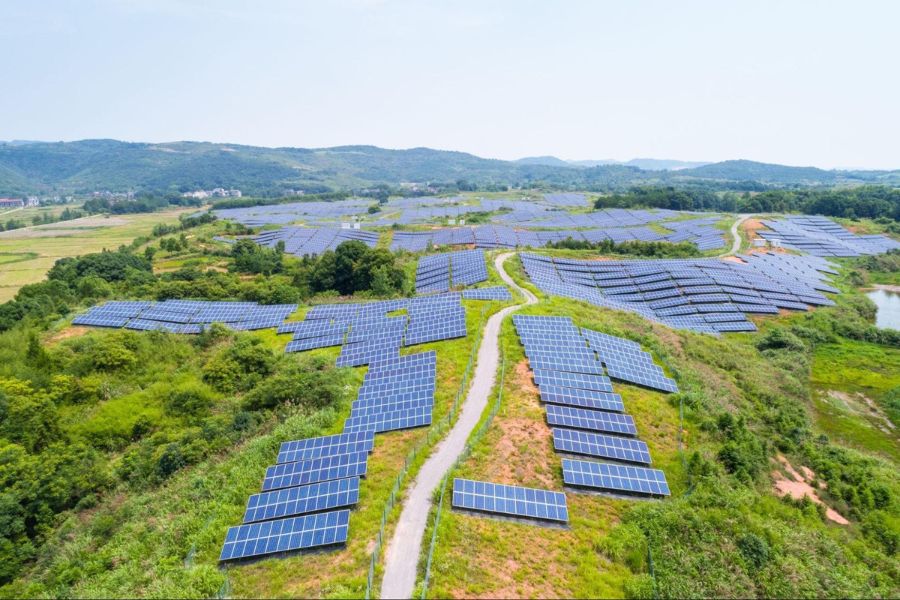The photovoltaic effect, discovered by the French physicist Becquerel in 1839 and implemented for the first time in 1883, when Charles Fritts built the first solar cell, was the driving force behind the development of what is, to date, one of the world’s most crucial renewable energies: solar energy.
Photovoltaic effect – What is it and how does it relate to solar energy?
The photovoltaic effect can be simply defined as “the potential for producing electric current by means of the contact between two different materials that are exposed to electromagnetic radiation”.
In the case of solar panels, electricity is generated by the silicon that the photovoltaic cells are made of.
Silicon is a semiconductor material and it receives radiation directly from the sun. The energy absorbed by each of the cells in the panel causes electrons to “jump” from one layer to another and thus produce an electric current.
We need to ask whether there’s any relationship between the photovoltaic effect and the photoelectric effect.
The two concepts, although often mistaken for each other, are different.
The photoelectric effect is a process in which electrons are released from a material due to the impact of electromagnetic radiation on it.
In other words, free electrons are produced.
With the photovoltaic effect, electric current is produced due to the high levels of energy that the free electrons produce in order to leave the atom.
For this reason, the uses of the electromagnetic effect and the photovoltaic effect are also very different.
Photovoltaic solar energy: past, present and future
To find the first functional (non-experimental) uses of solar photovoltaic technology, we have to go back to the Cold War, when photovoltaic cells became components in Soviet and American geostationary satellites and have since become an indispensable component of the so-called “space race”.
Over the course of time and further development, this technology has been implemented extensively and has become an integral part of many aspects of our daily lives.
The most widespread use of photovoltaic solar energy is for self-consumption in homes and businesses, but it isn’t the only one.
In addition to supplying sustainable electricity to the home, photovoltaic solar energy is used to power public lighting and signalling systems, communications systems (antennas, repeaters, etc.),agricultural and livestock farms, and to electrify rural or isolated areas.
Calculators and solar torches
A very simple example that we all know about are solar calculators, which work through exposure to sunlight.
In a similar vein, we can also find torches that are recharged by solar light for night-time use, or portable batteries to charge small household appliances or mobile phones.
Street lighting
Photovoltaic solar energy is also emerging as a great option for street lighting. With small panels, we can power streetlights at road junctions, or lights in rural areas and industrial estates.
The same application can be expanded to bus stops, billboards, and tunnels.
Signage
Signalling equipment that can be powered by photovoltaic energy includes lighthouses and buoys at sea, as well as beacons, road signs, and speed bumps.
Irrigation pumps or sprinklers
Another use for this type of renewable energy is in the livestock and agricultural sector, where sustainability is particularly relevant.
In fact, there are currently irrigation pumps that work using solar energy and which meet the demand for irrigation water in isolated areas with high levels of solar energy.
On certain types of livestock farms, the energy created by solar panels can also be used to power and automate cooling and irrigation systems, or even to electrify fences.
Cinemas and solar-powered vehicles
And what about the future?
Although solar energy potential is practically infinite, its future is particularly promising in sectors such as leisure and transport.
In fact, there are already international initiatives to harness solar energy to offer cinema screenings (Solar World Cinema or Cinesolar) or to create 100% electric “solar vehicles” with solar panels on their roofs.
Choosing solar panels means opting for renewable, clean, sustainable energy. Switch to self-consumption with My Green House and discover all its advantages.



